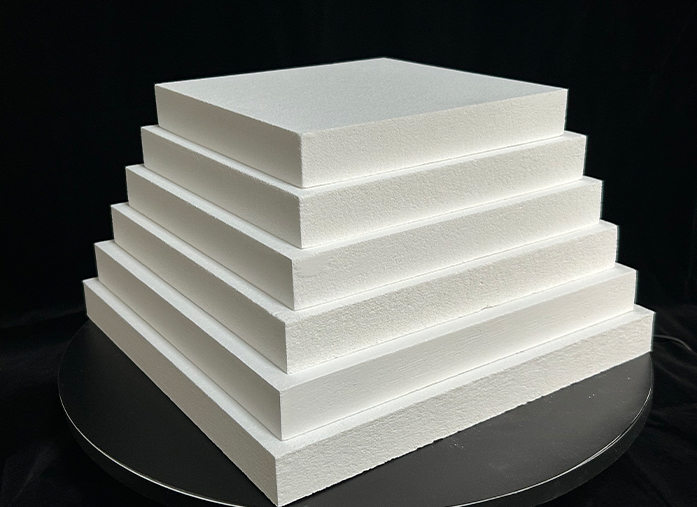

Tube Furnace Solutions: High-Temperature Efficiency for Industrial and Research Applications
High-temperature processes are essential in modern industrial and research applications, from ceramics and metallurgy to chemical engineering and electronics. The efficiency and precision of these processes depend heavily on the performance of the equipment used. Among these, the Tube Furnace has emerged as a versatile and reliable tool, providing controlled heating environments for a wide range of applications. By integrating advanced materials and innovative design, High Temperature Tube Furnaces offer unparalleled efficiency, safety, and adaptability.
Understanding Tube Furnaces and Their Applications
A Tube Furnace is a type of industrial furnace where a cylindrical heating chamber allows materials to be uniformly heated in a controlled atmosphere. The tubular design ensures precise temperature distribution, minimal heat loss, and compatibility with various process atmospheres, including inert gases or vacuum conditions. This makes tube furnaces particularly suitable for high-temperature experiments, material synthesis, sintering, and thermal treatments.
Industries such as ceramics, metallurgy, electronics, and glass benefit greatly from the consistent performance of tube furnaces. For instance, ceramic sintering requires uniform heat at extremely high temperatures, while metallurgy processes such as alloy testing and annealing demand precise thermal control to achieve desired material properties. Similarly, research institutes and universities use tube furnaces to conduct high-temperature experiments, such as powder roasting, nanomaterial synthesis, or chemical reactions under controlled atmospheres.
High Temperature Tube Furnace: Features and Advantages
Modern High Temperature Tube Furnaces are designed with energy efficiency, safety, and versatility in mind. Advanced insulation materials, often ultra-lightweight and high-temperature resistant, minimize heat loss while maintaining precise temperature control. This not only reduces operational energy costs but also enhances the safety of the surrounding environment.
Other advantages include:
Uniform Heating: The tubular design ensures even temperature distribution along the entire length of the furnace, critical for consistent experimental or production results.
Energy Efficiency: Lightweight, energy-saving insulation reduces the power required to reach and maintain high temperatures.
Customizable Options: Many furnaces can be tailored to specific temperature ranges, tube diameters, or length requirements to meet unique industrial or laboratory applications.
Durable Construction: Built with materials capable of withstanding repeated thermal cycles and harsh operational environments, these furnaces ensure long-term reliability.
By combining these features, high-temperature tube furnaces provide industries and researchers with precise thermal environments necessary for both experimental and production processes.
Industrial and Research Applications
High Temperature Tube Furnaces serve a diverse range of applications:
Powder Roasting and Sintering: In both industrial and research settings, uniform heating is critical for producing high-quality powders, ceramics, or composite materials. Tube furnaces enable controlled sintering at high temperatures with minimal energy loss.
Material Testing and Metallurgy: Tube furnaces allow metallurgists to heat alloys or metals in controlled atmospheres, enabling tests for hardness, ductility, or thermal stability.
Electronics and Semiconductor Manufacturing: Precision heating is essential in electronics manufacturing, where components must be processed at exact temperatures without contamination.
Chemical Engineering and Laboratory Research: High-temperature reactions, decomposition studies, and chemical synthesis often require the stable, controlled conditions that tube furnaces provide.
These applications demonstrate the versatility of tube furnaces, making them indispensable in both industrial production and experimental research environments.
Choosing the Right Tube Furnace
Selecting a High Temperature Tube Furnace requires careful consideration of multiple factors:
Temperature Range: Ensure the furnace can reach and sustain the temperatures required for your specific process.
Tube Dimensions: The inner diameter and length should accommodate the materials or equipment being processed.
Atmosphere Control: Consider whether inert gas, vacuum, or oxidizing atmospheres are needed, as this affects the choice of furnace type and tube material.
Energy Efficiency: Advanced insulation and lightweight materials reduce power consumption and operational costs.
Reliability and Durability: High-quality construction and robust materials ensure long-term performance under repeated thermal cycles.
Suppliers with expertise in High Temperature Tube Furnaces often provide customized solutions, combining cutting-edge materials with technical support to meet exact process requirements.
The Role of Advanced Materials
Innovations in high-temperature insulation materials play a key role in the performance of modern tube furnaces. Lightweight, energy-saving materials reduce heat loss, improve safety, and enhance the overall efficiency of the furnace. These materials are especially important in research environments, where precise temperature control is crucial for reproducible results.
Leading suppliers are increasingly integrating environmentally friendly, high-temperature alumina fibers and similar advanced materials into furnace designs. These materials allow for faster heating, better thermal retention, and lower energy consumption, contributing to both operational efficiency and sustainability.
Conclusion
A Tube Furnace is a vital tool for any facility or laboratory requiring precise, high-temperature heating solutions. Its versatility, combined with the efficiency offered by modern insulation and heating technologies, makes it ideal for industrial production, material testing, and high-temperature research applications.
By selecting a high-quality High Temperature Tube Furnace and leveraging advanced materials and expert customization, industries and research institutes can achieve reliable, energy-efficient, and safe high-temperature processes. Whether used for ceramics, metallurgy, electronics, or chemical experiments, tube furnaces provide the precision and performance necessary to meet today’s demanding industrial and research standards.